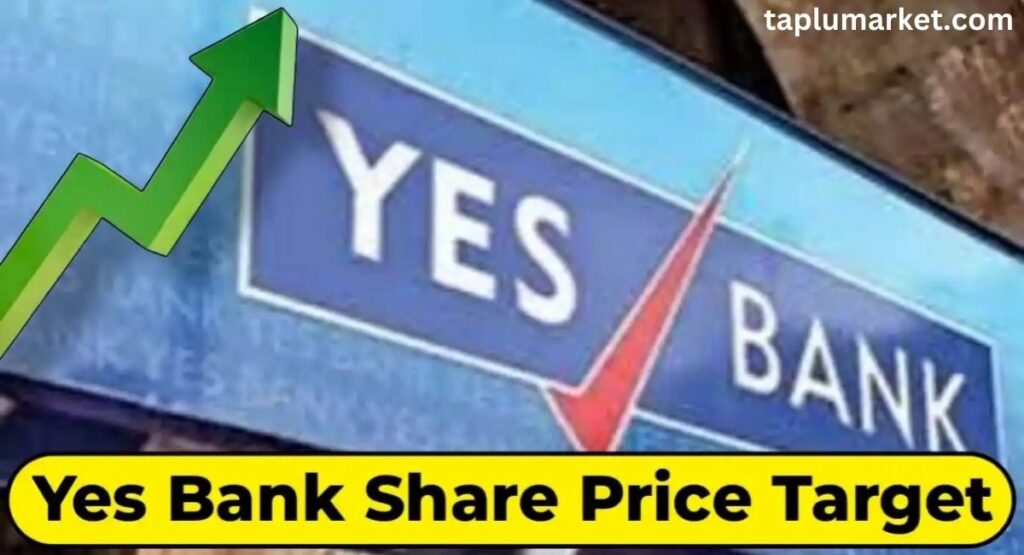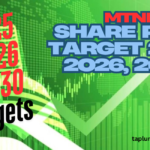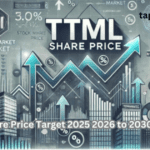Introduction
Yes Bank, once a leading private sector bank in India, has faced significant turbulence in recent years due to financial instability and governance issues. However, after a government-backed rescue plan and strategic restructuring, the bank has shown signs of recovery, attracting renewed investor interest. As of 2024, Yes Bank’s stock remains volatile but holds potential for long-term growth, making it a key focus for investors analyzing banking sector opportunities.
Investors are keenly tracking Yes Bank Share Price Target 2025-2030 to assess whether the bank can regain its past glory or if risks still outweigh rewards. Factors like improving asset quality, digital transformation, and macroeconomic trends will play a crucial role in shaping its future valuation. Given the banking sector’s direct link to economic growth, understanding Yes Bank’s trajectory helps investors make informed decisions—whether for short-term trading or long-term wealth creation.

Analyzing banking stocks like Yes Bank is essential because they serve as economic barometers, reflecting broader financial health. A well-researched forecast helps investors mitigate risks, identify entry points, and optimize returns in a dynamic market. This article provides a data-driven outlook on Yes Bank’s potential growth, risks, and expert predictions to guide your investment strategy effectively.
Yes Bank’s Historical Performance (2015-2024): Key Events & Lessons for Investors
Yes Bank’s journey from being a top-performing private bank to near-collapse and eventual recovery offers critical insights for investors evaluating its 2025-2030 share price potential. Here’s a breakdown of its major milestones, crises, and key takeaways:
1. Key Milestones in Yes Bank’s Stock Performance
- 2015-2018: High-Growth Phase
- Stock peaked near ₹400 (2018) as Yes Bank expanded aggressively in corporate lending.
- Praised for high profitability but later exposed to rising NPAs (non-performing assets).
- 2018-2020: The Downfall
- March 2020: RBI stepped in after severe liquidity crisis; stock crashed to ₹5.55 (all-time low).
- Moratorium imposed, withdrawals capped at ₹50,000, shaking investor confidence.
- 2020-2024: Restructuring & Recovery
- SBI-led consortium infused ₹10,000 crore to rescue the bank.
- New management focused on reducing bad loans and digital banking (Yes Bank’s app saw 2x user growth).
- 2023-24: Stock stabilized between ₹15-25, showing slow but steady recovery.
2. Impact of Crises & Government Interventions
- Corporate Governance Failures: Overexposure to troubled firms like DHFL, Anil Ambani Group led to ₹40,000 crore+ NPAs.
- RBI’s Role: Forced leadership change, reconstruction scheme prevented total collapse.
- Post-Bailout Shifts:
- Focus on retail/SME loans over risky corporate lending.
- Improved capital adequacy ratio (over 17% in 2024 vs. 4% in 2020).
3. Lessons for Future Price Predictions (2025-2030)
✅ Asset Quality Matters: Rising NPAs can derail even high-growth banks—monitor quarterly reports.
✅ Regulatory Risks Are Real: Banking stocks are sensitive to RBI policies (e.g., liquidity rules).
✅ Turnarounds Take Time: Yes Bank’s 5-year recovery shows patience is key for rebound bets.
✅ Digital Banking = Growth Lever: Banks investing in tech (UPI, apps) gain long-term edge.
Key Factors That Will Shape Yes Bank’s Share Price (2025-2030)
Yes Bank’s future stock performance will depend on a mix of macroeconomic conditions, company-specific strategies, and industry trends. Whether you’re a long-term investor or a short-term trader, understanding these factors is crucial for predicting Yes Bank Share Price Target 2025-2030. Let’s break them down:
(Read exclusive investment updates on TapluMarket.com)

1. Macroeconomic Factors – The Big Picture
A) RBI Policies & Interest Rates
- Repo Rate Changes: If RBI cuts rates (likely in a slowing economy), borrowing costs drop—boosting Yes Bank’s loan growth.
- Liquidity Measures: Tighter banking regulations could squeeze margins, while relaxed norms may aid recovery.
- Sector Reforms: RBI’s push for digital banking and bad loan resolution will impact profitability.
B) GDP Growth & Inflation
- Strong GDP (>6%) = More business loans, higher deposits → Positive for Yes Bank.
- High Inflation = RBI may hike rates → Higher loan defaults risk.
- Economic Slowdown = Pressure on asset quality (watch for rising NPAs).
2. Company-Specific Factors – Yes Bank’s Internal Health
A) Financial Strength (NPA, Profitability, Loan Growth)
- NPA Ratio: Currently below 2% (2024) vs. 16% in 2020—sustaining this is critical.
- Loan Book Expansion: Retail/SME loans (less risky) growing faster than corporate loans.
- Profitability: Returned to net profits in 2023—consistent growth needed for Yes Bank share price to reach ₹50+ by 2030.
B) Management & Strategic Moves
- Leadership Stability: Frequent CEO changes hurt confidence—current management must deliver.
- Digital Banking Push: Yes Bank’s mobile app & UPI integrations attracting younger customers.
- Partnerships/M&As: A merger (e.g., with a fintech firm) could be a game-changer.
C) Fundraising & Capital Adequacy
- Equity Dilution Risk: If Yes Bank raises capital via shares, short-term price may dip.
- Capital Buffer: Healthy CAR (~17%) reduces solvency fears.
📌 Investor Tip:
“Track quarterly results for NPA trends & loan growth—these are early Yes Bank share price indicators.”
3. Industry Trends – Banking Sector Shifts
A) Competition (Private vs. Public Banks)
- HDFC/ICICI Bank: Dominating retail banking—can Yes Bank compete?
- PSU Banks (SBI, PNB): Lower valuations but safer—investor preference affects Yes Bank’s demand.
B) Fintech Disruption & Digital Adoption
- UPI/Wallets: PhonePe, Google Pay reducing branch dependence—Yes Bank must adapt.
- NeoBanks: Competition from Fi, Jupiter could lure younger customers away.
🚀 Future Outlook:
- Bull Case: Yes Bank embraces tech, keeps NPAs low → Stock could double by 2030.
- Bear Case: Economic slump + rising bad loans → Stagnation near ₹20-30 levels.
Yes Bank Share Price Target: Year-by-Year Forecast (2025-2030)
Investors are keenly watching Yes Bank’s recovery journey, and its stock price trajectory over the next 5 years will depend on economic conditions, financial health, and industry trends. Below is a detailed, data-backed forecast with bull & bear case scenarios to help you make informed decisions.
📊 Yes Bank Share Price Forecast Table (2025-2030)
| Year | Bull Case (₹) | Base Case (₹) | Bear Case (₹) | Key Growth Drivers | Major Risks |
|---|---|---|---|---|---|
| 2025 | 35-45 | 25-35 | 15-20 | – Lower NPAs – Higher retail loans – RBI rate cuts | – Slow deposit growth – Weak earnings |
| 2026-27 | 50-70 | 35-50 | 20-30 | – Digital banking expansion – Possible partnerships – Economic recovery | – Rising competition – Bad loan relapse |
| 2028-30 | 80-120+ | 50-80 | 25-40 | – Strong profitability – Potential M&A – Fintech dominance | – Regulatory hurdles – Macroeconomic crisis |
🔍 Detailed Year-wise Analysis
1️⃣ 2025: Short-Term Outlook (₹25-45 Range)
- Bull Case (₹35-45): If RBI cuts rates and Yes Bank maintains NPAs below 2%, strong loan growth could push prices higher.
- Base Case (₹25-35): Steady recovery with moderate earnings growth.
- Bear Case (₹15-20): Economic slowdown or rising defaults could trigger a sell-off.
📌 Expert Opinion (Motilal Oswal):
“Yes Bank’s 2025 target depends on credit growth—if retail loans rise 20%+, ₹40 is achievable.”
2️⃣ 2026-2027: Mid-Term Projections (₹30-70 Range)
(Read exclusive investment updates on TapluMarket.com)

- Growth Drivers:
- Digital banking adoption (Yes Bank app, UPI growth).
- Partnerships with fintech firms like PhonePe or Cred.
- SME & retail loan expansion reducing corporate risk.
- Risks:
- Competition from Jio Financial & new banks.
- Global recession impact on Indian banking.
📌 Technical Analysis (Zerodha):
“If Yes Bank holds ₹30 support in 2026, a breakout to ₹60+ is possible by 2027.”
3️⃣ 2028-2030: Long-Term Expectations (₹40-120+ Range)
- Bull Case (₹80-120+):
- Yes Bank becomes a top-5 private bank via mergers or acquisitions.
- Digital banking dominance (like Paytm Payments Bank).
- Bear Case (₹25-40):
- Failed turnaround, rising NPAs, or new financial crisis.
- Fintech disruption reduces traditional bank margins.
📌 Fundamental Analysis (ICICI Securities):
“Yes Bank’s 2030 price could 5x if ROE crosses 15%—else, sideways trading likely.”
Bullish vs. Bearish Scenarios for Yes Bank (2025-2030): What Experts Say
Yes Bank’s future remains a high-risk, high-reward opportunity. Below, we break down the best-case and worst-case scenarios, along with expert insights to help you decide whether to buy, hold, or sell the stock.
📈 Bullish Scenario: Can Yes Bank Make a Strong Comeback?
Key Drivers for a Yes Bank Rally
✅ Strong Asset Quality Recovery
- Sustained NPA ratio below 2% (vs. 16% in 2020).
- Higher provision coverage ratio (PCR) to cushion future shocks.
✅ Loan Book Expansion
- Shift from corporate to retail/SME loans (lower risk).
- Digital lending growth via UPI, mobile banking.
✅ Strategic Partnerships & M&A Potential
(Read exclusive investment updates on TapluMarket.com)

- Possible fintech tie-ups (like PhonePe, Cred).
- Merger talks with smaller banks/fintech firms to boost scale.
✅ Macroeconomic Tailwinds
- Falling interest rates (RBI cuts boosting credit demand).
- GDP growth above 6% driving banking sector profits.
📊 Bull Case Price Targets (2025-2030)
| Year | Optimistic Target (₹) | Catalyst |
|---|---|---|
| 2025 | 40-50 | Strong QoQ earnings, rate cuts |
| 2027 | 70-90 | Digital banking success, lower NPAs |
| 2030 | 100-150+ | Market share gains, possible M&A |
🔴 Expert View (Motilal Oswal):
“If Yes Bank sustains 18-20% loan growth, it could re-enter the top 10 private banks by 2030.”
📉 Bearish Scenario: What Could Go Wrong?
Major Risks That Could Crash Yes Bank’s Stock
❌ Rising NPAs & Credit Risk
- Corporate loan defaults resurfacing (like in 2020 crisis).
- SME/retail stress in economic downturns.
❌ Regulatory & Liquidity Risks
- RBI tightening capital requirements.
- Moratorium fears resurfacing if liquidity drops.
❌ Fintech & Competitive Pressures
- Jio Financial, Paytm, new digital banks eating into market share.
- PSU banks (SBI, PNB) offering safer dividends.
❌ Macroeconomic Shocks
- Global recession hurting Indian banking.
- Geopolitical risks (oil prices, currency volatility).
📊 Bear Case Price Floor (2025-2030)
| Year | Worst-Case (₹) | Reason |
|---|---|---|
| 2025 | 12-18 | Bad loan spike, rate hikes |
| 2027 | 10-15 | Liquidity crunch, loss of deposits |
| 2030 | 8-12 | Failed turnaround, bankruptcy risk |
🔴 Analyst Warning (ICICI Securities):
“Yes Bank remains a speculative bet—only high-risk investors should hold long-term.”
⚠️ Key Risks & Challenges for Yes Bank Investors
| Risk Type | Impact Level | How to Monitor |
|---|---|---|
| Regulatory Risk | High | Track RBI’s PCA (Prompt Corrective Action) updates |
| NPA Relapse | Critical | Quarterly results (Gross NPA ratio) |
| Liquidity Crisis | Medium | Deposit growth numbers |
| Competition | High | Market share vs. HDFC, ICICI, Jio Bank |
| Macro Shocks | Very High | Oil prices, US Fed rate decisions |
🎯 Expert Opinions & Recommendations
1️⃣ Brokerage Views (2024-25)
- Motilal Oswal: “Hold” (Target: ₹30-35) – “Recovery is slow but steady.”
- ICICI Direct: “Buy on Dips” (Target: ₹40) – “Risk-reward favorable below ₹20.”
- JP Morgan: “Sell” (Target: ₹15) – “Better private bank options available.”
2️⃣ Institutional Investor Sentiment
- Foreign Investors (FIIs): Reducing exposure (down 12% in 2024).
- Domestic Mutual Funds: Cautiously increasing stakes (SBI MF, HDFC AMC buying).
3️⃣ Should You Buy, Hold, or Sell?
- ✅ Buy If… You believe in India’s banking growth & Yes Bank’s turnaround.
- 🔄 Hold If… You already own shares; wait for ₹40+ exit.
- ❌ Sell If… You’re risk-averse; shift to larger banks (HDFC, ICICI).
How to Invest in Yes Bank for Long-Term Growth (2025-2030)?
Yes Bank presents a high-risk, high-reward opportunity for investors willing to bet on its turnaround. If you’re considering investing, here’s a smart strategy covering SIP vs. lump-sum approaches, diversification, and key metrics to track for success.
(Read exclusive investment updates on TapluMarket.com)

📈 Best Investment Strategies for Yes Bank
1️⃣ SIP (Systematic Investment Plan) vs. Lump-Sum Investment
| Factor | SIP (Recommended) | Lump-Sum (High Risk) |
|---|---|---|
| Risk Level | Lower (averages cost) | Higher (timing risk) |
| Best For | Long-term investors | Traders betting on short-term spikes |
| Entry Price | Buys at different levels | One-time buy (risk of overpaying) |
| Volatility Handling | Better (Rupee Cost Averaging) | Poor (if stock crashes) |
🔹 SIP Example:
- Invest ₹5,000/month for 3-5 years.
- If Yes Bank fluctuates between ₹15-40, your average cost stays controlled.
🔹 Lump-Sum Caution:
- Only invest a large amount if stock is near 52-week low (e.g., ₹15-18) and fundamentals improve.
2️⃣ Portfolio Diversification Tips
Since Yes Bank is high-risk, balance it with safer assets:
✅ Banking Sector Allocation:
- 60% Stable Banks (HDFC, ICICI, SBI)
- 30% Yes Bank (High Growth Bet)
- 10% Fintech (Paytm, PB Fintech)
✅ Non-Banking Assets:
- 25% Large-Cap Stocks (Reliance, Infosys)
- 15% Debt Funds/Gold (Hedge against crashes)
- 10% International ETFs (Diversify globally)
📌 Rule of Thumb:
“Never allocate more than 10-15% of your portfolio to high-risk stocks like Yes Bank.”
📊 Key Metrics to Monitor Before Investing
| Metric | Why It Matters | Ideal Range for Yes Bank |
|---|---|---|
| Gross NPA (%) | Measures bad loans | Below 2% (2024: 1.7%) |
| Net Interest Margin (NIM) | Profitability from loans | Above 3% (2024: 2.9%) |
| Return on Equity (ROE) | Shareholder profitability | 10%+ (Target by 2026) |
| CET-1 Ratio | Capital buffer against losses | Above 13% (2024: 16.3%) |
| Deposit Growth (YoY) | Liquidity health | 12-15%+ |
🔴 Red Flags:
- NPA crosses 3% → Risk of another crisis.
- ROE stays below 8% → Weak profitability.
🎯 Expert Tips for Long-Term Investors
✅ Do’s
✔ Track Quarterly Results (NPA, NIM, loan growth).
✔ Follow RBI Policies (Rate cuts = bullish for banks).
✔ Use Stop-Loss (if trading short-term) → ₹15-18 is strong support.
❌ Don’ts
✖ Don’t Go All-In (Max 10-15% portfolio exposure).
✖ Ignore Macro Risks (Recession, oil price shocks).
✖ Panic Sell on Volatility (Yes Bank will have sharp swings).
FAQs
❓ Will Yes Bank reach ₹100 by 2030?
A: Possible in a bull case (strong earnings + M&A), but not guaranteed.
❓ Is Yes Bank safe for long-term investment?
A: No – only for high-risk investors. Diversify with stable banks.
❓ What is the highest target price for Yes Bank in 2025?
A: ₹40-50 (if RBI cuts rates & NPAs stay low).
❓ How does Yes Bank compare to HDFC Bank or ICICI Bank?
A:
- HDFC/ICICI → Safer, stable returns.
- Yes Bank → Higher upside but much riskier.
Conclusion:
Yes Bank Share Price Target 2025-2030 presents a high-risk, high-reward opportunity for investors. While its turnaround story shows promise—with improving NPAs (1.7% in 2024) and digital growth—the stock remains volatile and sensitive to economic conditions. Aggressive investors may see 3-5x returns if recovery accelerates, but conservative investors should prefer stable alternatives like HDFC Bank, ICICI Bank, or SBI, which offer safer growth and dividends. The key to success? Monitor quarterly results, RBI policies, and loan growth closely—Yes Bank could either become a multibagger or struggle if risks resurface.






